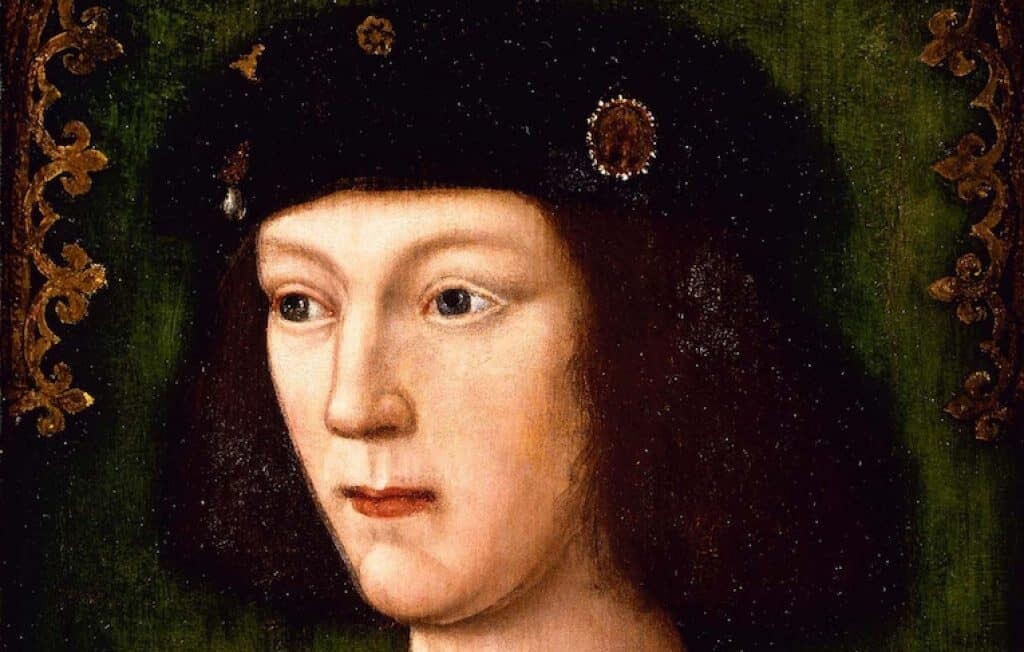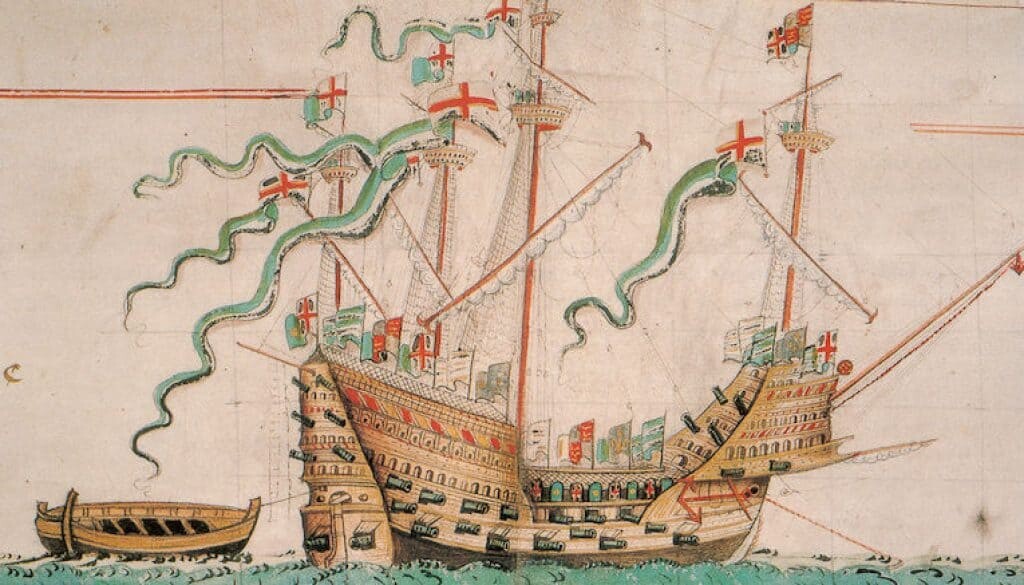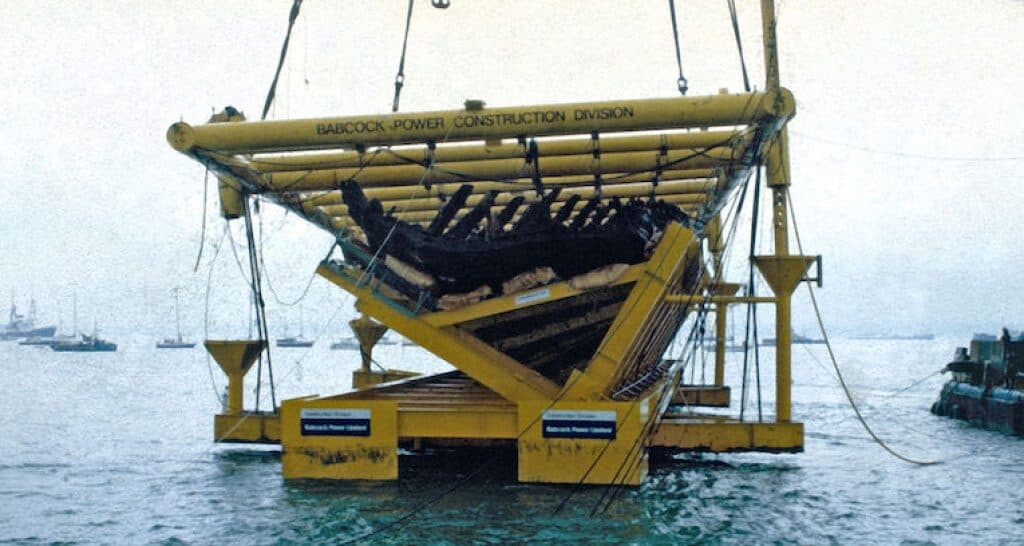Most people, when thinking about King Henry VIII of England, think of his obesity, the number of his wives, and his being the first head of the Anglican church. But his earlier life showed him as a warrior king, frequently in battle with England’s enemies. He was also a (not always successful) military strategist who led campaigns and armies into foreign countries in hopes of expanding his realm.

When he started his reign in 1509, he inherited a few military ships and a few more commercial ships that could be changed into warships in case of battle. Henry felt that this was not enough and began to build a navy of ships that could go to war with enemies, mainly the French.
Construction
The first two new warships constructed specifically for battle were the Peter Pomegranate and the Mary Rose. Popular theories about the naming of the ships state that the former was named for Saint Peter and the Aragon queen Catharine (whose badge featured a pomegranate) and the latter named either after Henry VIII’s sister Mary Tudor or named after the Virgin Mary.
Related: Discovery of Over 40 Ancient Shipwrecks in the Black Sea
The Mary Rose may have been initially mentioned in a 1510 document outlining the payment for a large ship of “400 tons”, or in a later document which states that Henry VIII paid for moving the ship to London from its construction site in Portsmouth.

The new fleet was under the command of the Lord High Admiral, Sir Edward Howard. After Henry’s establishment of a naval presence, there were now almost 20 warships and crews that added up to over 5,000 sailors of differing rank.
In 1512, Howard led the ships to the area of Brittany in France, where they easily defeated the local military and resulted in the British soldiers capturing 12 enemy warships and the pillaging of the area once the English had landed.
You May Also Like: Incredible Titanic Pictures Rarely Seen
In another skirmish in 1513, the fighting at sea began anew, with Lord Admiral Howard boarding an enemy ship but falling overboard and quickly drowning due to the heavy armor he was wearing.
Sinking
But the crucial event and mysterious episode of the Mary Rose took place during the 1545 Battle of the Solent (a stretch of the sea near the Isle of Wight just south of England). On the night of July 18, 1545, King Henry VIII turned over the command of his navy to a seaman by the name of George Carew. Carew soon took the fleet near the Isle of Wight and encountered French ships.
He went into battle.
The fact that the Mary Rose sunk during that battle is not disputed. The reason why, however, is the topic of debate that goes on to this day. The official website of the Mary Rose Trust states that the Mary Rose’s demise may have been due to four reasons (although a combination of them could also have been the cause).
- The Mary Rose could have doomed itself by having unskilled seamen on board that didn’t correctly maneuver the ship during the battle with the French. Human error could also have caused the sinking by insubordination or mistaken judgment about the strength of the French fleet.
- Some theorists believe that the weather may have caused the ship to sink. Surviving eyewitnesses claim that a sudden strong wind may have struck the sails at just the right angle to turn the ship over. This wind could have been a contributing factor to the sinking.
- The ship could have had too heavy a load of cannons and sailors. Also, it seemed that the cannons’ ports were open in preparation for an attack and if the ship leaned too far to one side, water would have come rushing through those openings and sunk the ship.
- Probably the most common sense theory, but which was later disproved, is that the French weaponry sunk the ship, and a perhaps overly-patriotic French cavalry officer did state officially that the Mary Rose was struck by enemy fire and damage to the ship was severe enough to take the Mary Rose under.
All but approximately 35 of the 400-man crew died when the ship sank.
Discovery of the Mary Rose
The wreck of the Mary Rose would be discovered 426 years later in 1971 by undersea exploration. It showed no sign of being hit by enemy fire, opposing the theory that the ship sank after being hit by French warships.

The remains of the ship were brought onshore and are now the feature of a museum in Portsmouth, the city that built it. It has now come full circle.
Sources:
“Mary Rose” Wikipedia, pulled 6/7/16
The Mary Rose Trust website, pulled 6/7/16